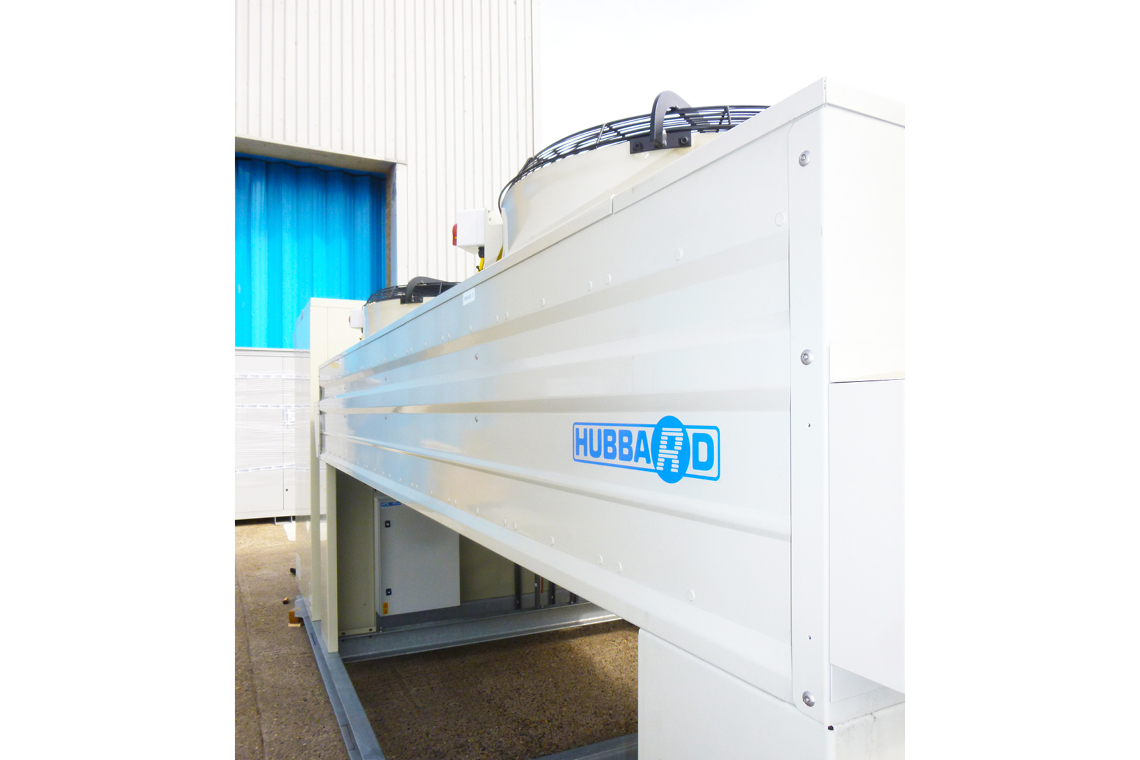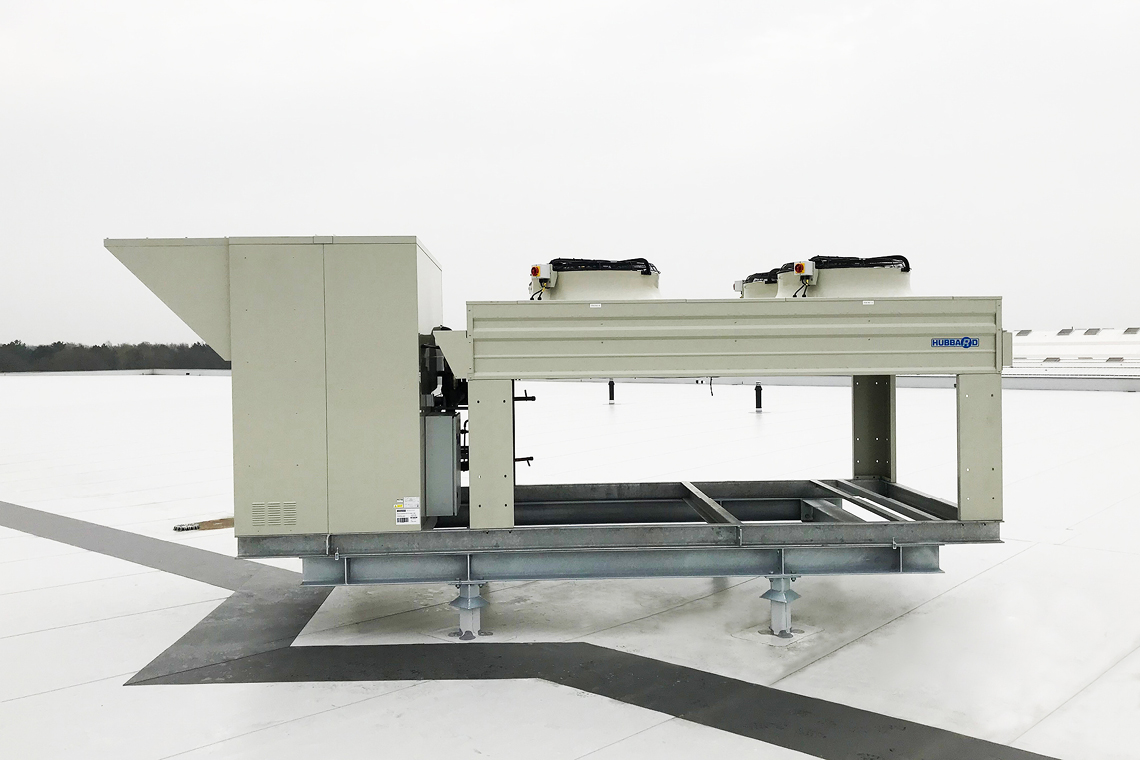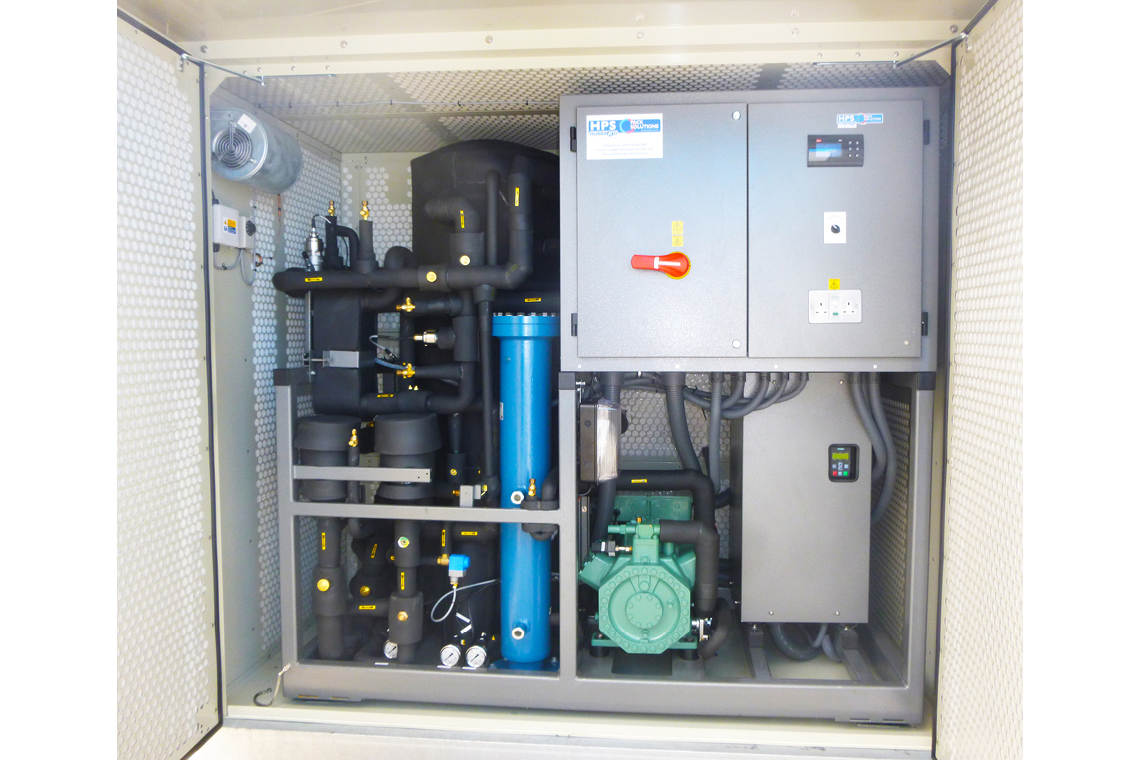Mushrooms can contain anywhere between 70 to 90 per cent water, and have the potential to keep on growing even after they have been picked. If not correctly refrigerated, their fibres continue growing and quickly break down. Therefore, maintaining optimal refrigerated storage conditions is vital to control the activity of growth enzymes and to preserve their taste, in order to maintain market value.
One of the BITZER ECOLINE+ CO₂ compressors is now being used for exactly this purpose: incorporated into a Hubbard refrigeration pack, it delivers the right temperatures for a large cold store in a new mushroom growing facility. With a cooling capacity of 140 kW, the plant was required to maintain temperatures of between -3 and 0 °C to maintain mushrooms in perfect condition following picking and removal from the growing area.
From initial boots on the ground, the new installation took around 10 weeks to build and commission. It was the first time the UK specialist had worked with a single CO₂ compressor with such a high capacity.

Ashwaq Mohammed, Refrigeration Design Manager at Hubbard, states: “We would normally recommend a multi-compressor pack for this scale of project, as it provides extra resilience and security. Given the perishable nature of the product, this adds a further reason to take a precautionary approach. However, the end user was keen to go with a ‘one-on-one solution’, to keep the refrigeration system as simple as possible for service and maintenance purposes. The resilience issue was admittedly less important given the impeccable reliability record of BITZER units, so we were fairly comfortable about the chosen approach.”

The key reason for selecting CO₂ as a refrigerant was that the end user wanted a solution with low global warming potential (GWP), while delivering high efficiency performance and low running costs. Carbon dioxide has a GWP of 1.
The ECOLINE+ range is the first ever produced by BITZER to include a six-cylinder reciprocating compressor at top of the capacity range. It is designed to operate with optimal efficiency at both full- and part-load operation, with seamless integration into refrigeration systems. Importantly, the range is equipped with Line Start Permanent Magnet Motors (LSPM), which offer significant efficiency benefits. It also has mechanical capacity control, widening the operating envelope and extending application. This enables systems to operate at full- and part-load with equal efficiency to those equipped with frequency inverters, without the added complexity and cost.

Kevin Glass, Managing Director of BITZER UK: “BITZER originally developed ECOLINE+ as a way of making high pressure, high efficiency CO₂ systems available for use in mainstream applications, such as supermarkets. However, the features and performance that make it attractive for retailers also lend the units to use in other applications, such as process cooling and agriculture. The Hubbard installation is an excellent example of how it can be applied, with outstanding environmental credentials and low running costs. Transcritical CO₂ cooling has in the past often been considered something of a black art, as it can be difficult to handle and control. The aim behind ECOLINE+ was to provide a streamlined package that was straightforward to apply ‘straight out of the box’. It addresses the main perceived difficulties of using transcritical CO₂, and opens the way for widespread adoption, to the benefit of contractors, end users and the environment.”



Dear Raed Rahi, Thanks for your request! We’ll send you an application envelope via mail, which equates to minimum saturated suction temperature of -20°C. So that would be the lowest for the compressor.
What is the lowest evaporator temperature that this compressor can operate on?